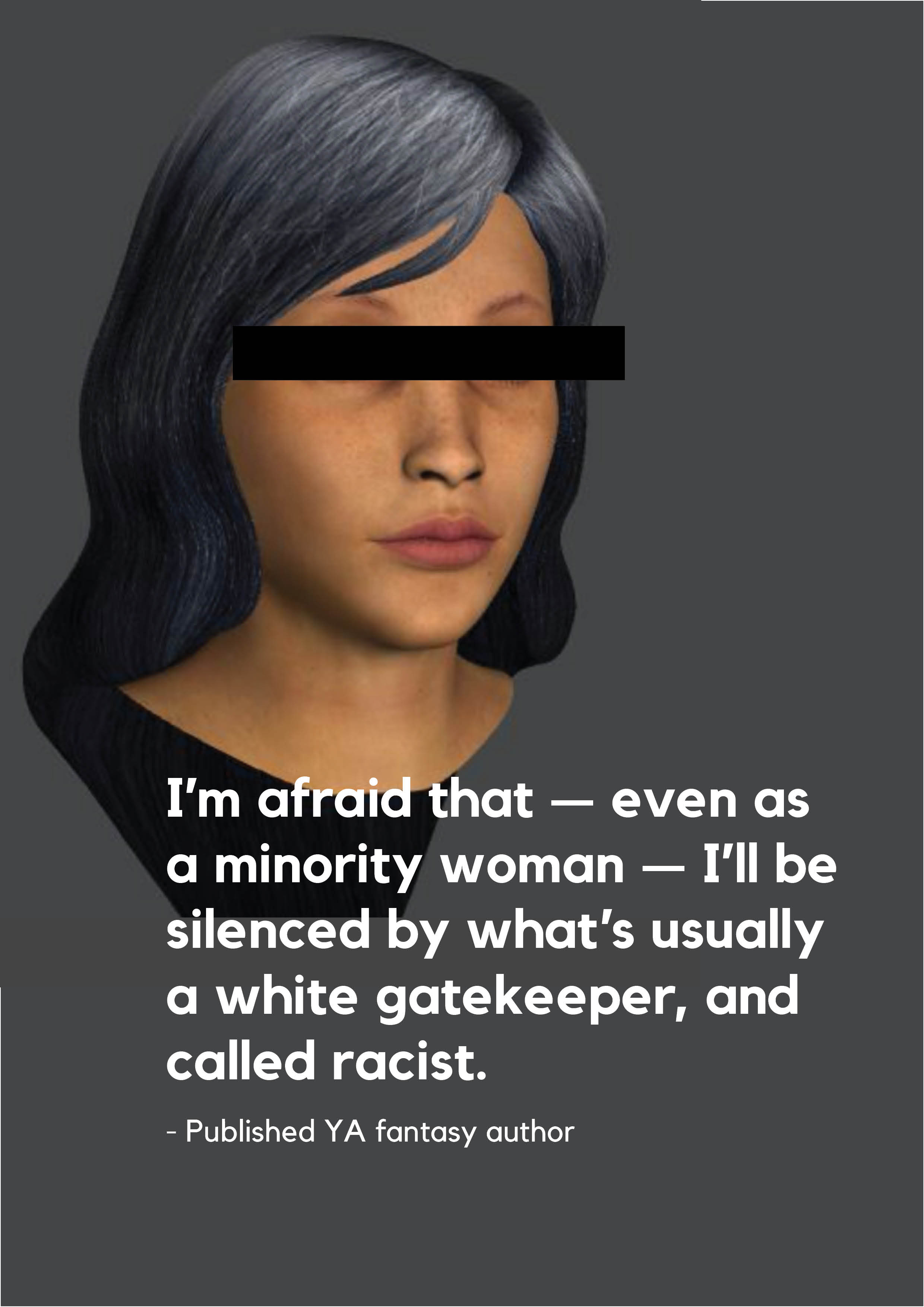POWERPLAY RESEARCH PAGE
Hannah Sterke
Week 1
Week 2
Home
Week 3
Project
Exercises
First attempt at research questions:
- Is there a way to turn cancel culture into a more positive approach? A learning experience?
- Are marginalised groups allowed to take justice into their own hands in a corrupt system?
- Should someone be held accountable for their history even if they have grown as a person in the meanwhile?
- Should work (books, art, songs etc) that was canceled be erased from existence due to their offensive nature?
Feedback
- What if a historically critical voice is discovered offensive, should the work be taken out of the curriculum? Who stays in the canon?
Notes
- Often a snowball effect. Someone reads something online without having read the original source or researching the topic.
- You don't say it to a person's face so it becomes easier
- Fear of being canceled causes people to keep their mouths shut -> no new ideas are formed -> no progression -> standing still -> the progressive woke generation becomes conservative somehow
Ideas I've had along the way
- The cancel collection: a place to access canceled literature, tweets, speeches etc. Reading the other side of the argument is important in developing new ideas and critiques
- Cancel therapy: mental health care for people that have spiralled into madness due to being cancelled
- Using AI and facial recognition to see if an apology video is sincere. Apology culture is part of cancel culture. Yet they are never believed to be honest.
- What would the world look like today if we had canceled important figures in history?
- Chinese merit system, but with canceled figures -> face blurs, black spots (black mirror inspired)
- Introducing a new court system: digital court
What would trial look like. How could we give internet accounts a fair trial?
- Discuss the taking down of statues: digital vandalisation so it can't be cleaned up -> use of phone filters
- Cancel detector: point phone and see what offensive things this person has done (speculative design)
- Over identification: what kind of person should you be to not be cancelled?
Cancel culture often occurs from an opinion of someone who didn't actively listen to the community they are addressing.
cancel culture most often involves previously silenced groups making a real if small dent on the power of those traditionally privileged by gender, race, and so on.
The internet council will judge you now
On the one hand, this strategy can be justified as an effective tool for achieving social justice by victims unable to obtain legal redress or public apology. Examples include the MeToo boycotts.
On the other hand, cancel culture often turns into public bashing, sending death threats, doxxing(making personal information public)and calling for someone's resignation.
Both Foucault and Nietzsche had the opinion that the past was important. Not in that time, but today. To learn from it and use it to improve contemporary society.
Cancel culture context: cancelling often aims to erase certain controversial opinions or publications. But those tweets shouldn't be deleted, and books should be published. It's important to have access to what is deemed offensive so we can learn from it and look back.
It would be like erasing history and pretending like it never happened. In the process of cancelling, innocent victims also exist, their voices are being silenced.
Foucault x nietzsche x cancel culture
Foucault and docile bodies: power is everywhere, it keeps you docile. Everyone on the internet watches each other, induces fear to speak your opinion. Power is in the hands of social media algorithms but also of normal people like you and me. There is no centralised form.
Week 4
On the internet, anyone can judge your fate. In a mere 15 minutes you could be dethroned and stripped of all your power.
Extreme opinions go viral faster
Social media is programmed to award chaos. This has quite some consequences on which sounds are heard. It's the loudest, most extreme opinions that prevail and start a mob.
I had an interview with Joost Zuijderduin, also known as 'NerdyGeekyFanboy', owner of the biggest YA bookblog in The Netherlands. He told me of the existence of sensitivity readers, editors from marginalised groups who proofread ARC's before being published. And how he used his platform to boycott JK Rowling, an author under heavy fire for her transphobic comments on social media, who got canceled for it.
Canceled book study: Blood Heir
Blood heir was canceled because it was claimed to be anti-black and insensitive towards African-American slavery. But in fact, Zhao wrote the book with her Chinese heiritage in mind, with tropes of Asian human trafficking. So actually, there was an attempt to silence a voice, to erase it and get it unpublished. The whole ordeal took mostly place on twitter.
As visual research I scanned/screenshotted the pages of Blood Heir, which I read for content analysis. Because of the attempts to silence the voices within the story, I used big blotches of ink and bold calligraphy to highlight the voices within the book. Human trafficking is a real issue, and the attempts to erase it in the need for accurate portrayal of culture, was a false assumption.
Since twitter was the place where the ordeal transpired, I used tweets and twitter symbols to 'censor' the story of Blood Heir. As a symbol that social media is a stifling atmosphere for authors, where they are forced to leave certain aspects out, revise their vision and exert big amounts of influence over the YA publishing world.
GOAL
Tell the whole story of canceled books in YA
Due to people not reading the book and blindly following social media, books are called from publishing and authors become scared to write diverse characters in case it gets misinterpreted or seen as the 'wrong way' to write a particular culture/person. I want the main characters of the books to tell what happened and what is wrong with representation in the publishing industry. Thereby, giving back their voice after being silenced.
Experiment 1. With a mobile app called 'Talkr', I took a piece of fan art of Ana from instagram, main character of Blood Heir, talk. Feels very static and unnatural but an interesting first attempt at bringing the character to life.
Experiment 2. recreating Ana in Animoji.
More 3D and less static, but doesn't
fit the narrative
Experiment 3. RemoteFace.ai is a software that turns pictures into 3D models, which you can then use in video conference. Tested in zoom.
Experiment 4. Adobe character animation. Follows your facial movement and makes use of built-in camera to translate expression immediately
Selfmade illustration of main character Ana.
Had contact with the author for aspects of her appearance.
I also told her my idea and it seems she likes it
Experiment 5. Character generator is a tool by autodesk and open source for students. This was a limiting generator however and I couldn't really shape Ana as I would like to.
Imported the character generator
character and started sculpting to my own liking
Script draft+
more rendered version of sketch
STATEMENTS FROM PUBLISHED AUTHORS, SOON-TO-BE PUBLISHED AUTHORS AND THE YA COMMUNITY
Ideas for making public: posters with audio of the characters, hear full story at website
Ideas for making public: bookmarks featuring canceled book characters
CHOSEN MAKING PUBLIC: PODCAST
A podcast where the canceled characters tell the story. My first approach was very accusing, which is what cancel culture is as well. Erik (copywriter) advised a more subtle way to handle things.Don't explain too much right off the bat, make the listener curious, and build up towards the plottwist that the person talking does not exist.
The character talks about their world, and then talk about how they were canceled in our world. The podcast is the bridge between the two.
- Not so true stories
- Canceled characters
- fictional fights
- No name
- Untitled
- Backstories
- Blacklisted
- By the book
- Judge a book by its content
- open booktalk
Canceled, characters, stories, tale, talk, real, true, fiction, young adult, book, novel, writer, words, publish


This this name and design?
Erasure:the backspace on a keyboard is used to delete words, which is something the cancel culture strives to do with unpublishing books.
Docility: people are scared to write their opinions online and backspace their thoughts.
Writing: authors have to revise characters to fit stereotypes or to appeal to publishing, hence they use the backspace constantly while writing.
Backstories: a backstory is an important term in storytelling and literature, and entails the background of character: how they became who they are, where they are from and in this case what led up to their cancellation. The characters in the podcast address their own backstories in both their own world and the real world.
Backspace + backstories
Backstories
Welcome to Backstories. A podcast where we go in depth on all things YA literature. We are here to reveal the facts behind the books you’ve maybe never even heard about, to discuss characters that are more than meets the eye and to hear stories that are nothing like you imagined.
Alongside the podcast I also want to create something tangible. A physical remembrance of these stories, an archive to remind us of cancel culture.
Episode one of the podcast. Throughout the speaker, Ana, gives hints that she is the character of the book they are discussing. Saying things like 'in your world', 'we have special power', 'otherwise I wouldn't be here' etc. Till at the end she reveals she is actually the character from the book
How to create more contrast between the host and the main character being interviewed?
Podcasts are often posted in two ways on the internet. One is in pure audio form, the other is where they filmed reactions and the people talking. With the latter I want to create more contrast between the host and the main character. Video podcasts add a whole new layer to an experience and allows listeners to connect more deeply with the speakers.
This can be done through set design, clothing, makeup and more.
It can be done by making a split in the podcast table and visualising the two worlds: the normal and the fictional one. But also through clothing. For example, in Blood Heir they wear specific garments meant for cold weather called 'Kechyans' and uses words like 'Bratika' to describe her brother. These could be incorporated as well.
It could also be filmed in two separate locations, to really give the feeling like they are not from the same world, or at the same table with multiple characters to interview.
Same location, different set design
Different locations, other backgrounds
Multiple characters, one table
Sketch